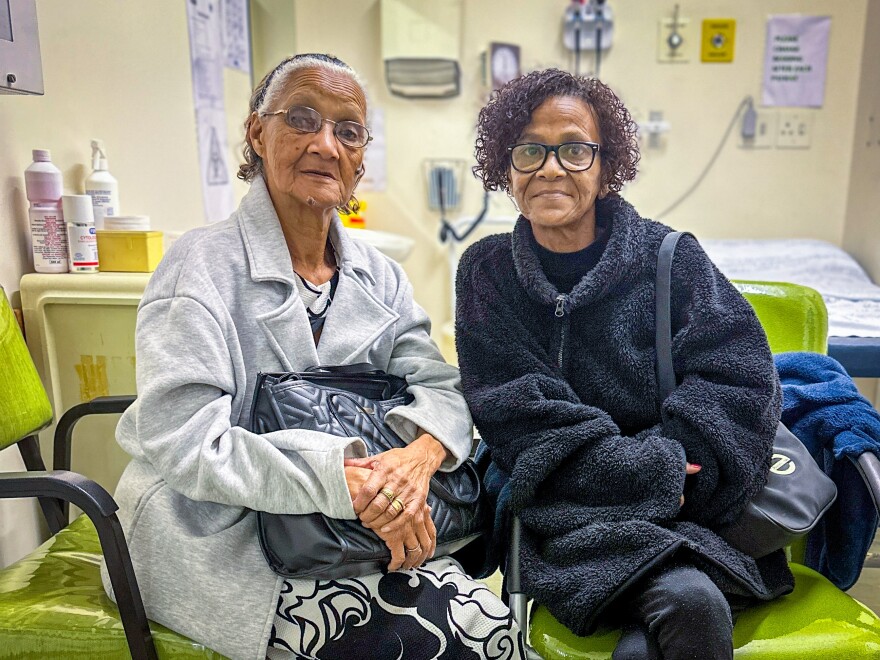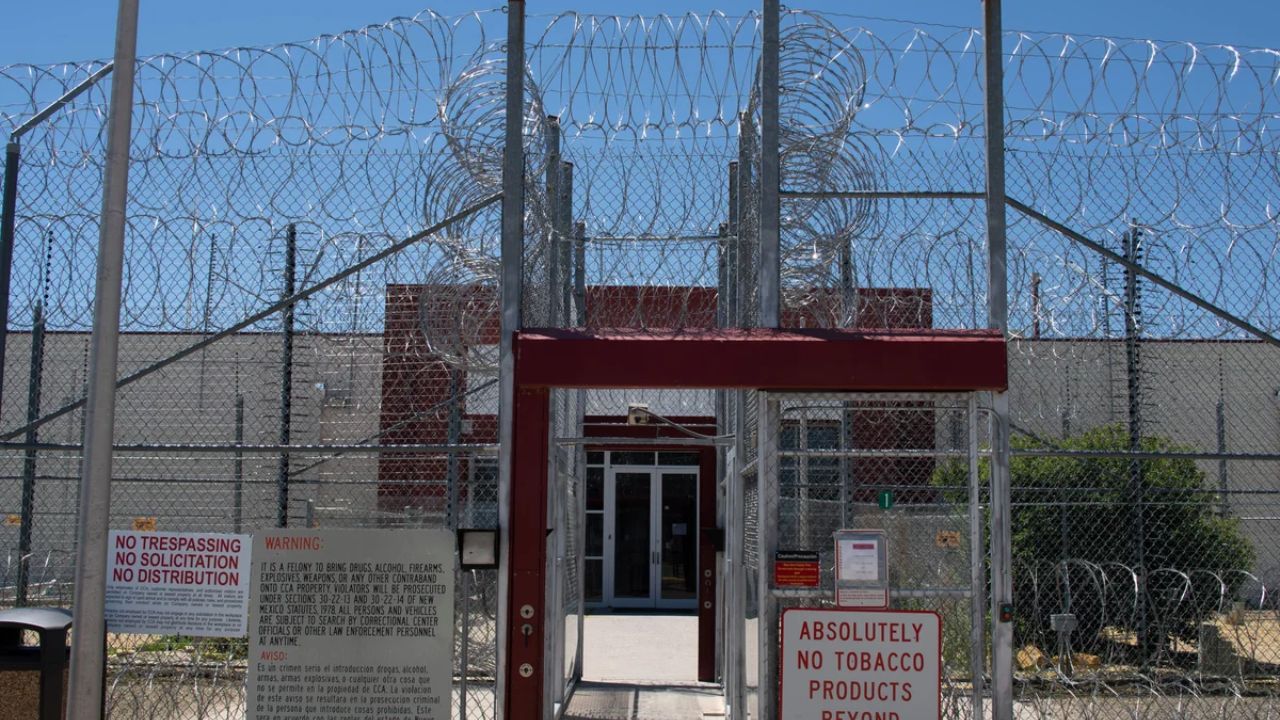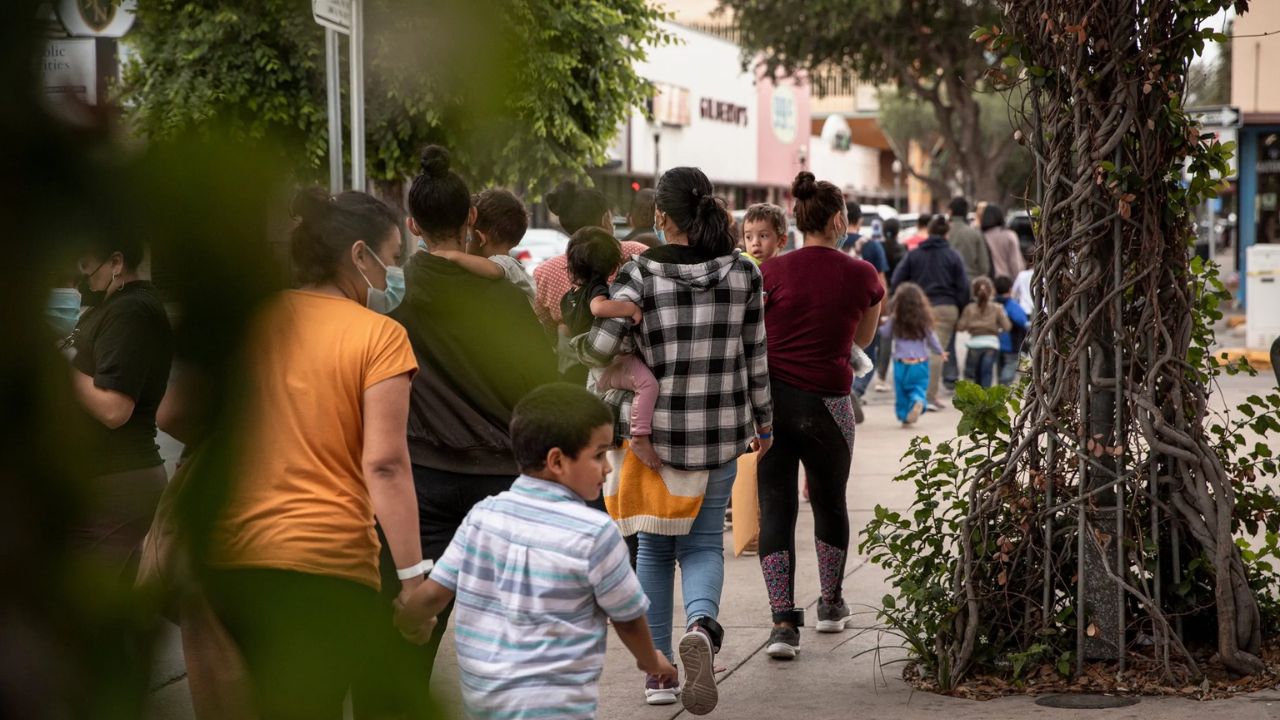After the tumor spread from Eleanor Ceres’s chest and started to protrude out of her neck, she was diagnosed with lung cancer.
Ceres was born and raised in Cape Town, South Africa, and has smoked for more than 30 years. Almost three-quarters of lung cancer fatalities worldwide are caused by smoking.
Why didn’t she receive a diagnosis sooner? Her only complaint before the tumor appeared was a painful arm, which the physicians attributed to arthritis. Her cancer had progressed to Stage 4 and was terminal by the time of her diagnosis in April 2024. Her suffering was lessened by the palliative treatment that doctors could provide.
“My youngster is about twelve years old. Ceres, a single mother, says, “I want to watch her grow up, get married, and have her own kids.” “I cry a lot because I’m gonna die and everybody’s gonna stay alive.”
There are hints to a perplexing problem with lung cancer in the Ceres narrative.
It is the most deadly cancer in the world, taking the lives of 1.8 million people annually. However, sub-Saharan Africa’s official figures indicate otherwise. According to death rates, lung cancer appears to be a concern solely in South Africa, the richest nation in the region, and specifically in the Western Cape province, which has the most effective and well-resourced healthcare system.
However, experts claim that these figures obscure the true picture, which is that lung cancer is terribly underreported in sub-Saharan Africa. Dr. Coenie Koegelenberg, a pulmonologist at Tygerberg Hospital in Cape Town, says that although smoking is somewhat more common in South Africa than in its neighbors, it is just half the picture. “We have the most accurate stats because we actually diagnose lung cancer,” he claims.
As infectious diseases like HIV and TB have grown more under control and non-communicable diseases (NCDs) have become an existential danger, Africa’s “hidden lung cancer epidemic,” as Koegelenberg refers to it, is a part of a broader global health problem.
By 2050, for instance, the number of new instances of cancer in Africa is predicted to more than double, from 370,000 to 940,000 annually. Even though NCDs cause two-thirds of all deaths each year, just 1% of global health budget is used to prevent and treat them in low- and middle-income nations.
Since lung cancer can typically be prevented by quitting smoking or even cured with routine screening and early treatment, it provides a case study for how these nations can succeed or fail in treating NCDs.
Rather, the disease has spread unabated throughout sub-Saharan Africa due to widespread undercounting and resource shortages. “If you don’t report things and put your head in the sand, that doesn’t mean it’s not there,” Koegelenberg asserts.
Why lung cancer goes undiagnosed
According to Dr. Keertan Dheda, a pulmonologist at Groote Schuur Hospital, the most typical sign of lung cancer in its early stages is no symptoms at all because the lungs have virtually no nerve endings.
When symptoms do show up, they are frequently rather generic and include breathing difficulties, blood in the cough, and chest pain. Because of the high prevalence in the region, physicians in sub-Saharan Africa frequently misdiagnose patients with lung cancer as having tuberculosis, Dheda adds.
According to Lorraine Govender, a nurse and the national manager of health promotion at The Cancer Association of South Africa, “Patients would go through the whole treatment regimen for tuberculosis and not really be investigated for lung cancer,” According to Cancer Research UK, 55% of persons with lung cancer pass away within a year, so those six to nine months of potential therapy can be fatal. “The lack of training for health care providers to identify lung cancer is a big problem,” she states.
Given that those who have tuberculosis are twice as likely to develop lung cancer as those who do not, this bacterial disease may have an even more direct impact because it causes DNA damage and inflammation in the lungs.According to Koegelenberg, HIV is also linked to lung cancer because it impairs a person’s immune system, making it harder for them to fight off respiratory illnesses or destroy cancer cells in their early stages. According to his own studies, people with HIV are more likely than those without HIV to be younger and have more advanced lung cancer. “In the wheel of colliding epidemics,” Koegelenberg explains, “lung cancer is but one spoke.”
Due to these difficulties, a large number of lung cancer patients pass away with an incorrect diagnosis, and because there is insufficient infrastructure to confirm deaths and their causes, it is rarely known what caused them to pass away. “In Africa, where we don’t have the screening and diagnosis available, we may see deaths from cancer but not know what cancer the patient actually died from,” adds Govender, “or maybe have deaths and not know it was cancer.”
According to Dr. Kelechi Okonta, a cardiothoracic surgeon at the University of Port Harcourt Teaching Hospital in Nigeria, autopsies are rarely carried out for cultural and religious reasons, despite the fact that they could help answer these issues. According to the World Health Organization, two-thirds of African nations lack accurate birth, death, and cause of death statistics.
According to Okonta, sub-Saharan Africa is caught in a catch-22 situation regarding lung cancer, where systemic undercounting results in a lack of statistics, which in turn permits governments to overlook the illness and the necessity of improved record-keeping. “No government, at any level, is taking any deliberate action. Even at hospitals, there is no lung cancer unit, no lung cancer group, no lung research funding, and no lung cancer registry,” Okonta claims. “They think it’s not a problem.”
Timely diagnosis is the other aspect of the issue. Although South Africa and the Western Cape are the best at detecting lung cancer, most patients discover it too late. According to data from the Western Cape’s biggest hospital, 94% of lung cancer patients in 2019 had advanced, incurable disease when they were first diagnosed. According to pulmonologist Dr. Ayanda Trevor Mnguni, chief of the internal medicine department at Khayelitsha District Hospital in South Africa, advising someone with advanced lung cancer to quit smoking is always morally problematic. “Once you are actually so far gone, there’s really no point.”
As tobacco companies pursue the region to replace declining revenues in the West, the lung cancer epidemic is expected to worsen due to skyrocketing smoking rates throughout sub-Saharan Africa. Communities like Khayelitsha, a racially divided township outside of Cape Town, are particularly vulnerable because tobacco companies frequently overburden impoverished areas with cheap cigarettes and relentless marketing. With an estimated 2.4 million inhabitants, it is a vast network of improvised dwellings made of cardboard, wood, and corrugated metal that is twice as dense as Manhattan.
Patients in blue gowns frequently wander outside to smoke at Khayelitsha District Hospital. According to Mbulelo Shicani, a patient with lung cancer here, he pays 10 rand, or 50 cents, for a pack of smokes, and these costs have been declining. Shicani adds that local store owners never reject customers because they are too young.
The Western Cape has the best health care system in South Africa, if not all of sub-Saharan Africa, according to Mnguni. “We obviously diagnose lung cancer a lot better compared to the rest of the country and the rest of the continent,” he adds. “But that doesn’t mean much if smoking rates continue to rise,” he adds, adding that palliative treatment is typically the only option because the disease is nearly always so advanced.
and palliative care is only given to lung cancer patients once they are diagnosed.According to Mnguni, people in Khayelitsha nearly always have such advanced cancer that “we don’t even refer them to the oncologist.”
Why screening isn’t an easy solution
Given that pharmaceutical companies like AstraZeneca and the Chinese company BGI Genomics view Africa as a crucial place for innovation and investment, lung cancer screening is one method of identifying cancers and treating them early. According to Koegelenberg, Discovery, the biggest private health insurance company in South Africa, began paying for screening a few months ago after he and Dheda developed the first lung cancer screening guidelines in sub-Saharan Africa in 2019.
However, that would only benefit the private health care system in South Africa, which serves a small, affluent minority with significantly more resources. Dheda freely admits that, “although we should be screening and we know we should be screening,” lung cancer screening isn’t feasible for the 84% of South Africans enrolled in the public system or even in the majority of other sub-Saharan African nations.
Even if there were enough CT scanners to screen high-risk individuals, there wouldn’t be capacity to biopsy nodules and treat all these cases, given budget shortfalls and rapidly growing waitlists. “It’s unethical to do the scan if there’s an abnormality, and you actually can’t do anything about it,” says Dr. Sameera Dalvie, an oncologist at Groote Schuur Hospital.
The only option, as Mnguni sees it, is public health awareness with comprehensive anti-smoking campaigns and regulations. He points out that Shicani and most people in Khayelitsha don’t know that smoking can lead to lung cancer, so governments shouldn’t take awareness for granted. “Once people end up with cancer, unfortunately, you’re not going to do well,” Mnguni states. “For most limited resource countries, the best bet is to prevent people from getting the disease.”
This, too, is easier said than done, givenpressure from tobacco companiesand the need for greater social support to help people manage addiction. “Many people view smoking as a coping mechanism,” says Salom Meyer, one of the leaders of South Africa’s Cancer Alliance. “What are you going to offer in the place of smoking when communities are living in stress?”
Change may be on the way
Despite these challenges, Meyer is hopeful about the future. South African lawmakers areconsidering anew smoking lawthat would ban all tobacco and e-cigarette advertising, as well as raise penalties to 15 years of jail time for businesses that sell tobacco to children or at cut-rate low prices. Furthermore, recent research from Vietnam suggests that lung cancer screening might be feasible withchest x-rays and artificial intelligence, which is a more realistic, scalable option for sub-Saharan Africa, Koegelenberg says.
Ultimately, change hinges on better data collection, from comprehensive cancer registries to a universal death registration system, Okonta says. And that might have to be proactively driven by the healthcare system instead of the government in order to break the catch-22. “With adequate record keeping and follow-up of patients, we can solve this,” Okonta adds. “Maybe the government will start paying attention to lung cancer.”
“We must stop hiding behind, ‘Oh, it’s not going to be affordable,'” Meyer says, since the cost of inaction is far too high. “We must just do it.”
Simar Bajaj is an American journalist who has previously written about lung cancer forThe New York Times,National Geographic,STAT,NBC News,andScientific American.He is the recipient of the Foreign Press Association award for Science Story of the Year, the National Academies award for Excellence in Science Communications, and the AAAS Kavli Science Journalism Award.Copyright 2025 NPR






